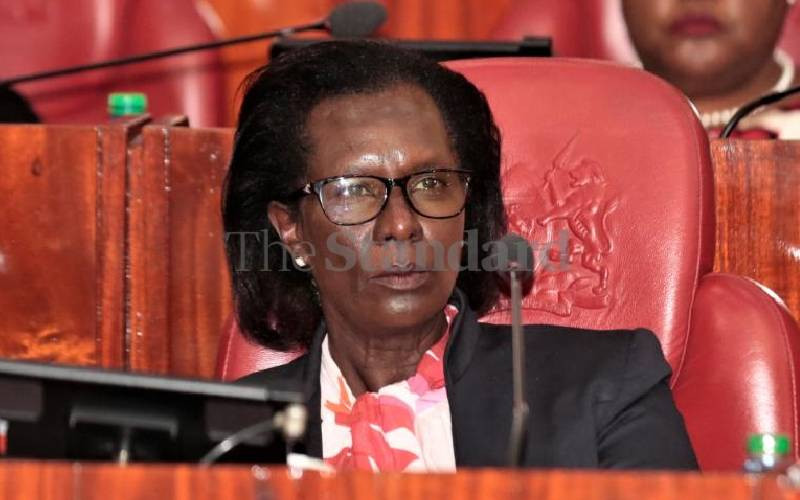The Kenya Economic Report has very disturbing statistics on many things. But for me, the most worrying figure is the number of doctors per county.
The worst-hit counties in terms of doctor to patient ratio are those in marginalised areas.
For instance, Baringo, which has a population of 538,561 people, has only two doctors, meaning each is expected to serve 269,280 persons.
Mandera, with a population of 1,025,756, has four doctors, each serving 256,439 patients.
Only Nairobi, Nyeri, Uasin Gishu and Mombasa have more doctors than the minimum required per population.
Apart from the pull of money, could this allure to big cities and towns have anything to do with a failure to orient medical education with the needs of local healthcare systems, leaving doctors unprepared for the realities on the ground? Which then begs the question, who is abetting such a mammoth scandal that is putting the lives of Kenyans at risk?
Strike deals
Or to put it another way, who is gaining from this continued shortfall of doctors?
One wonders how the only doctor in Isiolo, with a population of 143,294, is able to cope with the impossible workload. How is he facilitated by the Isiolo County administration, for instance? And where do the surplus patients seek their medical solutions? This is where the mostly unregulated herbal industry fills the void.
The overall picture presented by the economic report is not rosy, especially when one considers that the health sector is now under the responsibility of counties. In the past, it fell under the national government. It is, therefore, critically important that counties are equipped to handle this docket.
That said, the need for the counties to have many doctors is a workforce issue that requires a multi-sectoral approach.
The most affected counties can strike deals with countries where there are a fairly decent number of doctors for the population, such as Cuba (591 doctors for 100,000 people) or Belarus (455 doctors for 100,000 people). However, if these countries accept the challenge of sending their doctors to Kenya, the newcomers will have to contend with radically different cultures, geographies, tongues and diseases.
Now that the reality is sinking in on what it takes for counties to manage the health sector, there is need for them to develop recruitment strategies. For instance, they can identify prospective medical students who may be better adjusted to work in areas where they can provide culturally sensitive and appropriate care.
But there is another way in which the shortfall can be bridged in the interim: taskshifting. There is increasing evidence that the partial transfer of tasks to non-physicians is an effective means of care delivery in a variety of settings.
TRANSFORMATIVE MODEL
Stay informed. Subscribe to our newsletter
That is why there is need for medical curricula to evolve adequately to prepare physicians to practice within this transformative model. It will require the incorporation of progressive educational strategies, such as inter-professional training.
With the doctor crisis looming large, the idea of seeing medicine in exclusionary terms should not be allowed. The health sector will require broad policy reforms to address, among other issues, the limited number of crucial medical personnel.
The writer is a researcher on mental health issues.
[email protected]
 The Standard Group Plc is a
multi-media organization with investments in media platforms spanning newspaper
print operations, television, radio broadcasting, digital and online services. The
Standard Group is recognized as a leading multi-media house in Kenya with a key
influence in matters of national and international interest.
The Standard Group Plc is a
multi-media organization with investments in media platforms spanning newspaper
print operations, television, radio broadcasting, digital and online services. The
Standard Group is recognized as a leading multi-media house in Kenya with a key
influence in matters of national and international interest.
 The Standard Group Plc is a
multi-media organization with investments in media platforms spanning newspaper
print operations, television, radio broadcasting, digital and online services. The
Standard Group is recognized as a leading multi-media house in Kenya with a key
influence in matters of national and international interest.
The Standard Group Plc is a
multi-media organization with investments in media platforms spanning newspaper
print operations, television, radio broadcasting, digital and online services. The
Standard Group is recognized as a leading multi-media house in Kenya with a key
influence in matters of national and international interest.








